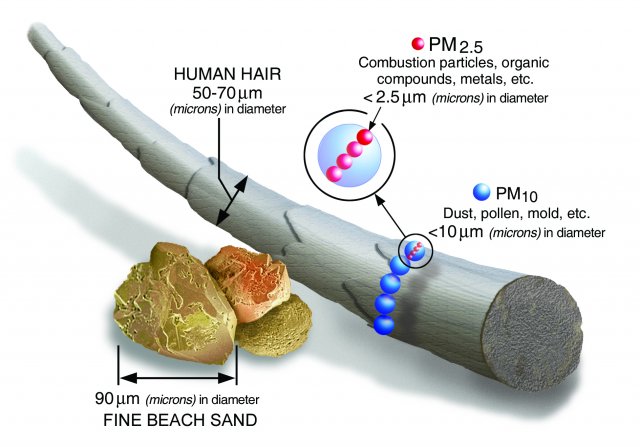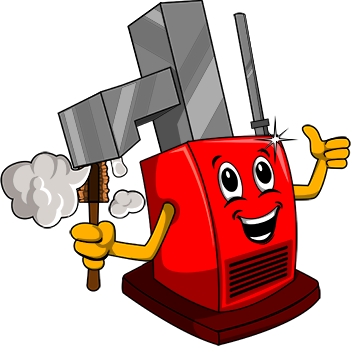COMMON QUESTIONS
Click any of the subjects to expand
General
Do I really need this service?
Furnace and duct cleaning should be considered an integral part of the regular maintenance of your HVAC system. Just like any other mechanical system, it needs to be clean to function properly.
Ask yourself:
- Are you changing your filter more than every 3 months?
- Have you done recent renovations?
- Is your furnace louder than usual or making strange noises?
- Does it cycle on and off frequently?
- Is your home excessively dusty?
- Do airflow issues make some rooms hotter or colder?
- Do you have pets, kids, or allergies?
If you answered yes to any of these, it may be time for a cleaning.
While servicing your system, we may also see issues that you may not be aware of.
You will have peace of mind knowing that your HVAC system is working efficiently and you and your family are breathing cleaner air in your home.
How do you clean air ducts?
Most of the work that we do while we are in your home is actually the duct cleaning.
To start, we hook a large vacuum and hose to both the cold (return) and hot (supply) sides of your ductwork system separately.
We proceed to clean each vent seperately throughout your home with various brushes and air tools which sweep and brush the debris into the main duct lines, where most of it is sucked away by the vacuum.
The main ducts are then "air-scrubbed" with an assortment of high pressure Scorpion Predator air whips which thrash around while blowing high pressure air inside the ductwork to dislodge and blow the dust and debris towards the high powered vaccum.
Our vacuum is equipped with a state-of-the-art HEPA MERV 17 filtration filter which ensures that 99.97% of the dust collected (down to 0.3 microns in size) will be captured by the vaccum. The vacuum literally cleans the air.
When used properly, the deep cleaning provided by this system can clean your ductwork to a like-new condition.
Taking pictures of the job as we go allows us to inspect the quality of our work, and lets you see the work we've done. We will always make sure to inspect everything we clean to ensure we didn't miss any dust or dirt.
How do you clean furnaces?
When cleaning the furnace, we first start by removing the blower fan from the cabinet and cleaning it with high air pressure. We then wipe and clean the fan with a heavy-duty citrus degreaser to ensure it is as clean as possible.
Next we carefully brush clean the heat exchanger and A/C evaporator coil, then air clean and wipe down the cabinet interior to remove all possible dust and debris.
Properly cleaning these components are critical steps which some other duct cleaning companies will skip to speed up the job. A clean heat exchanger and A/C evaporator in newer high-efficiency HVAC systems are vitally important for a proper functioning system.
Afterwards, we will clean and inspect the rest of the furnace components to ensure everything is in good working order before re-installing the fan.
Cleaning the furnace this way can increase the efficiency of the unit by up to 50%, saving you money every day on heating/cooling costs and helping to minimize costly equipment repairs down the road.
What types of furnaces do you service?
Natural gas, electric, oil, propane, boiler-type and geothermal furnaces.
We service all types, from modern day high-efficiency furnaces to older models.
How often should my furnace and ducts be cleaned?
The industry standard recommendation is every 2 to 3 years.
There are many variables to consider depending on your lifestyle, but in our opinion, more than 3 years is too long considering the importance and growing costs of modern HVAC systems.
What are you removing during a cleaning service?
The most common items removed during a furnace and duct cleaning are accumulated dust, dirt, lint and pet hair. Construction debris such as drywall dust, sawdust, wood chips, nails, screws or insulation are also common.
Less common are rodents, bugs, toys and objects that have fallen into registers over the years.
It may be surprising to some that even in the most spotless home, we often pull a sizeable amount of dust and dirt from the ductwork.
Service
How long does the service take?
A full furnace and ductwork service from start to finish usually takes between 3 to 4 hrs. A ducts only takes 2 to 3 hours. HRV cleaning can take an hour or so. Occasionally a service may take longer depending on accessibility, equipment type and the size of the job.
Rest assured, we won't compromise on the quality of our service by taking short-cuts or rushing through the job.
What can I do to prepare for a service?
Before we show up for a service, we ask that you have all large objects (like bookcases or cabinets) that cover a heating or return vent moved at least a couple feet away from the vent, to allow us access to it. If you are unable to move any obstructions yourself, we will attempt to move them during the service, provided they are of a reasonable size and weight.
We also ask that the furnace room be reasonably free of containers, furniture, boxes, tools and clutter so we have some space to work while cleaning your system.
Doing these small things will help speed up the service so we can finish up in a timely fashion!
Can I schedule a service during the winter months?
Sure you can! With one caveat.
Our cleaning system allows us to work during the winter months because we only require a 3/8" air hose to enter your home from our vehicle outside (not our large vacuum hose), allowing your homes warmth to stay inside while the service proceeds.
The issue is when it becomes too cold.
When the temperatures dips lower then -20°C (-4°F), our air lines and equipment freezes and becomes unreliable. In these cases, we wouldn't be able to reliably finish your service on time.
If it does get too cold for your booked service, we will contact you and promptly re-book you for a warmer day.
Do you provide service to rural areas?
Yes we do! We service all of Saskatchewan.
We are based in Saskatoon and mainly service the city and area, so if the service is more then 50KM from Saskatoon, we will add a fuel and time surcharge.
If this won't work for you, we can arrange other means for a service in your area. Rural and remote communities can request a service while helping to keep our service rates affordable. What we ask in return is for your help in scheduling 2 or more services in your area. In return for your patronage and effort, we will give you a discount on your service while pricing the others at or close to our Saskatoon rates. Help us help you!
Is the service loud?
Generally speaking, yes. Although people often comment that it's not as loud as they thought it would be.
If you are sensitive to loud noise, we are happy to provide you with ear plugs. It is also not uncommon for customers to leave their homes and us to our work while they go about their day.
Air Quality
What are some indoor air contaminants?
Examples of common indoor air contaminants and their main sources include:
- Dust, fibreglass, asbestos.
- Dust mites from carpets, fabric, foam chair cushions.
- Microbial contaminants, fungi, moulds, bacteria from damp areas, wet or damp materials, stagnant water, condensate drain pans, etc.
- Vapours, volatile organic compounds (VOCs) from computers, carpets, furnishings, cleansers and disinfectants, solvents, pesticides, disinfectants, glues, caulking, paints etc.
- Other sources: tobacco smoke, perfume, body odour, food, etc.

What symptoms are often linked to poor indoor air quality?
Indoor air quality issues do not affect everyone in the same way. When it is an issue, it is common for people to report one or more of the following symptoms:
- Dryness and irritation of the eyes, nose, throat, and skin
- Headache
- Fatigue
- Shortness of breath
- Hypersensitivity and allergies
- Sinus congestion
- Coughing and sneezing
- Dizziness
- Nausea
People generally notice their symptoms after several hours and feel better after they have left their home or when they have been away from home for a weekend or a vacation.
Many of these symptoms may also be caused by other health conditions including common colds or the flu, and are not necessarily due to poor indoor air quality. This fact can make identifying and resolving indoor air quality issues more difficult.
What are some health issues related to poor indoor air quality?
Occupants of buildings with poor indoor air quality report a wide range of health issues which are often called Sick Building Syndrome (SBS), Tight Building Syndrome (TBS), or Building-Related Illness (BRI).
The term sick building syndrome (SBS) is used to describe cases in which building occupants experience adverse health effects that are apparently linked to the time they spend in the building.
Building-Related Illness (BRI) refers to less frequent (but often more serious) cases of people becoming ill after being in a specific building at a certain time. In these cases, there is usually a similar set of clinical symptoms experienced by the people and a clear cause can often be found upon investigation. Legionnaires Disease is an example of BRI caused by bacteria which can contaminate a building's air conditioning system.
A certain percentage of people may react to chemicals in indoor air, each of which may occur at very low concentrations. Such reactions are often known as environmental sensitivities or multiple chemical sensitivities (MCS).
Some specific diseases have also been linked to or made worse by specific air contaminants or indoor environments, such as asthma being associated with damp indoor environments. In addition, some exposures such as asbestos and radon may not cause immediate symptoms but can lead to cancer after many years of exposure.




